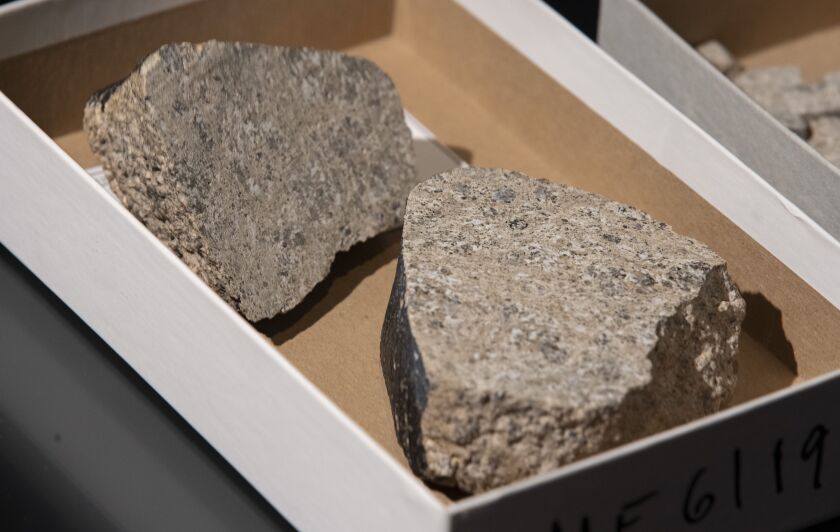About the size and shape of a lopsided softball, the lump of rock was not much to look at.
It didn’t glitter or shimmer, like objects in the Field Museum’s nearby Hall of Gems, which perhaps explains why few visitors took a detour to see what all the fuss was about Wednesday.
You perhaps have to be a scientist to get really excited about this kind of thing — the way Maria Valdes is, spending months this year examining — inside and out — this tiny chunk of rock, which plummeted through Earth’s atmosphere and plopped down in Morocco.
“A meteorite is a window into — not only the history of the asteroid it came from but into our solar system as a whole,” said a giddy Valdes, a Field research scientist.
When the rock was donated to the Field last year, Valdes and other scientists at the museum knew it was a meteorite, in part, because it had a glassy black crust — a telltale sign that it had at one time entered the atmosphere.
But it was Valdes’ research that revealed it was especially rare space debris because it had come from Vesta, the second-largest asteroid in the solar system and often visible in the night sky. Of all meteorites found on Earth, only about 4% come from Vesta, Valdes said.
The asteroid is about 300 miles in diameter and was formed billions of years ago, scientists say, but hasn’t undergone the kind of punishment and change earth rocks endure — from volcanic activity to erosion to being melted down and recycled through the constant movement of the earth’s tectonic plates.
“The asteroid is old. It has experienced most of its activity very early on — and then it was frozen in time,” said Philipp Heck, the museum’s curator of meteoritics and polar studies.
By studying meteorites, scientists hope to understand the very beginnings of how our planet was formed.
But if you’re hoping to stare in wonder at the space rock and ponder Earth’s infancy, you’ll have to wait. Valdes and other scientists say they have more to learn from the rock — at least for now. There’s no timeline for when it might be put on display for the public.
“You could spend a lifetime studying this,” she said.





